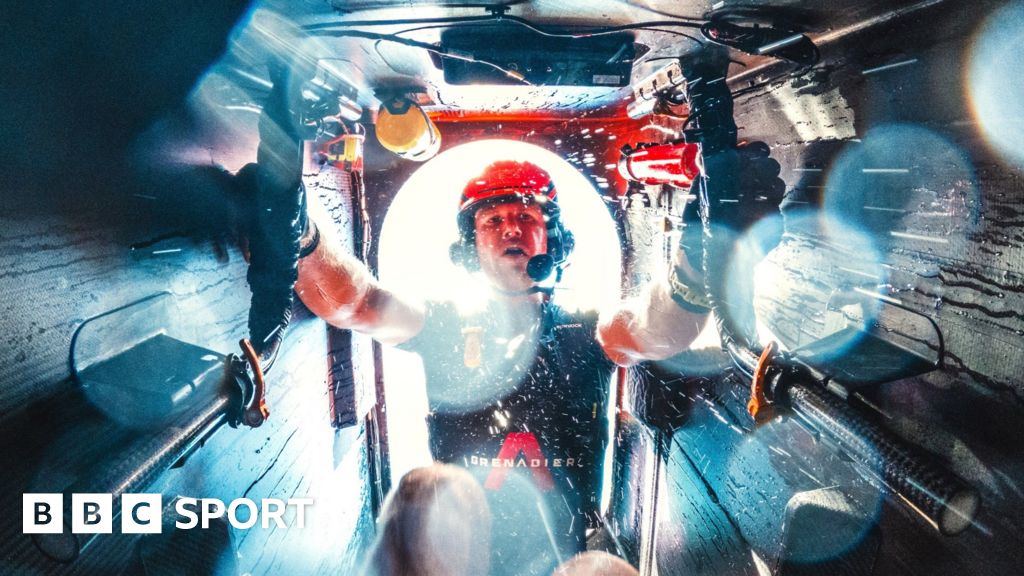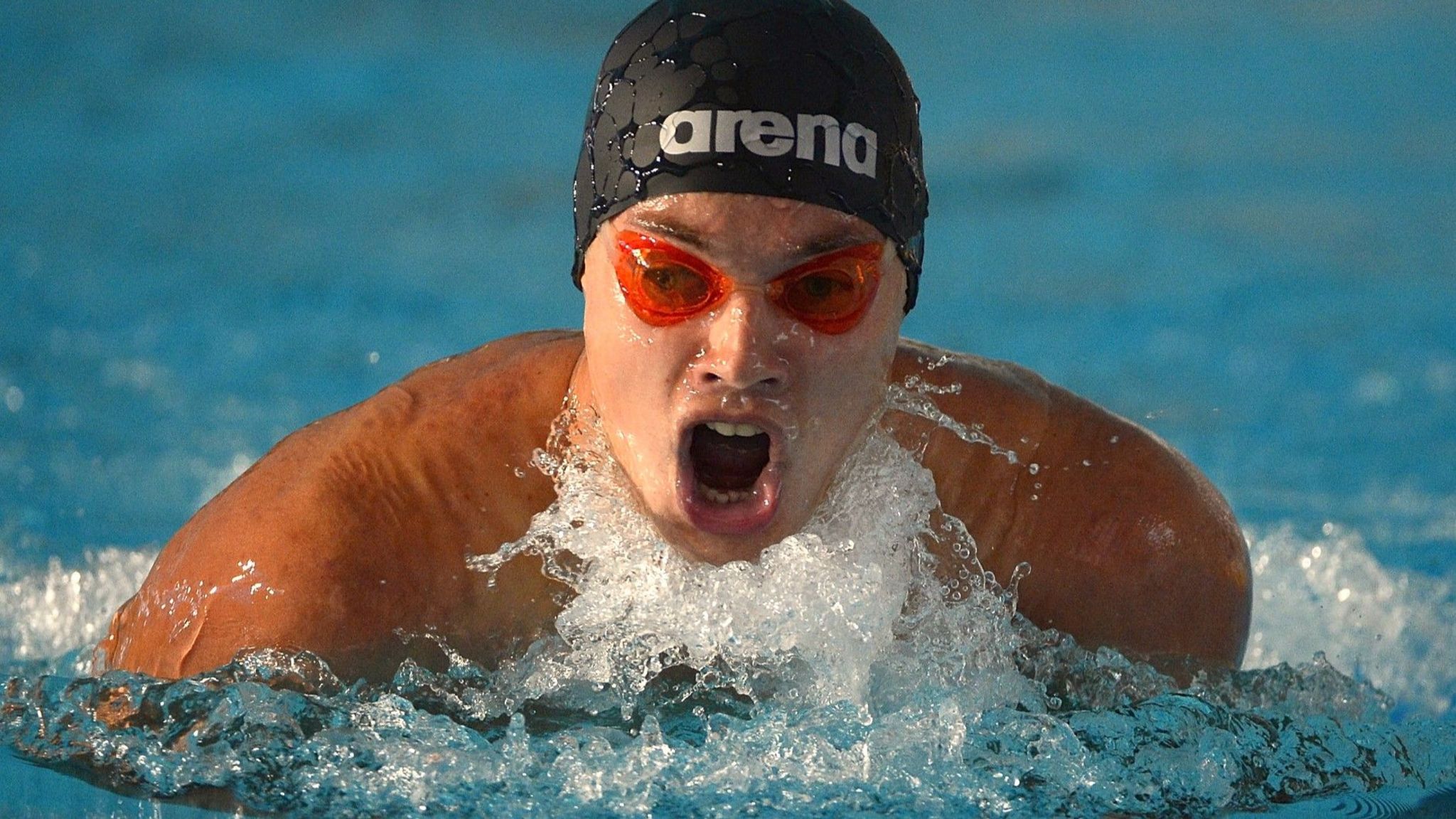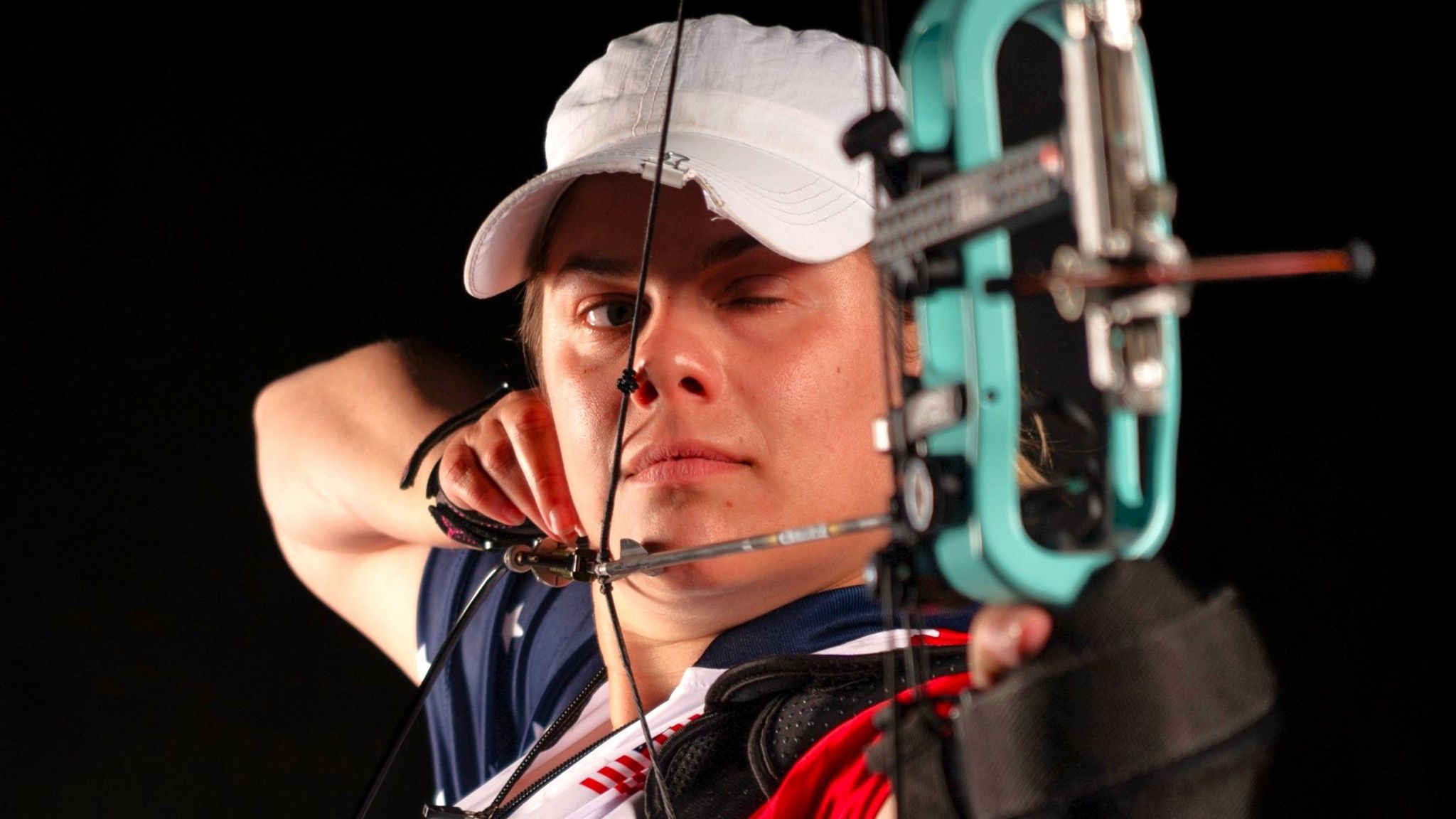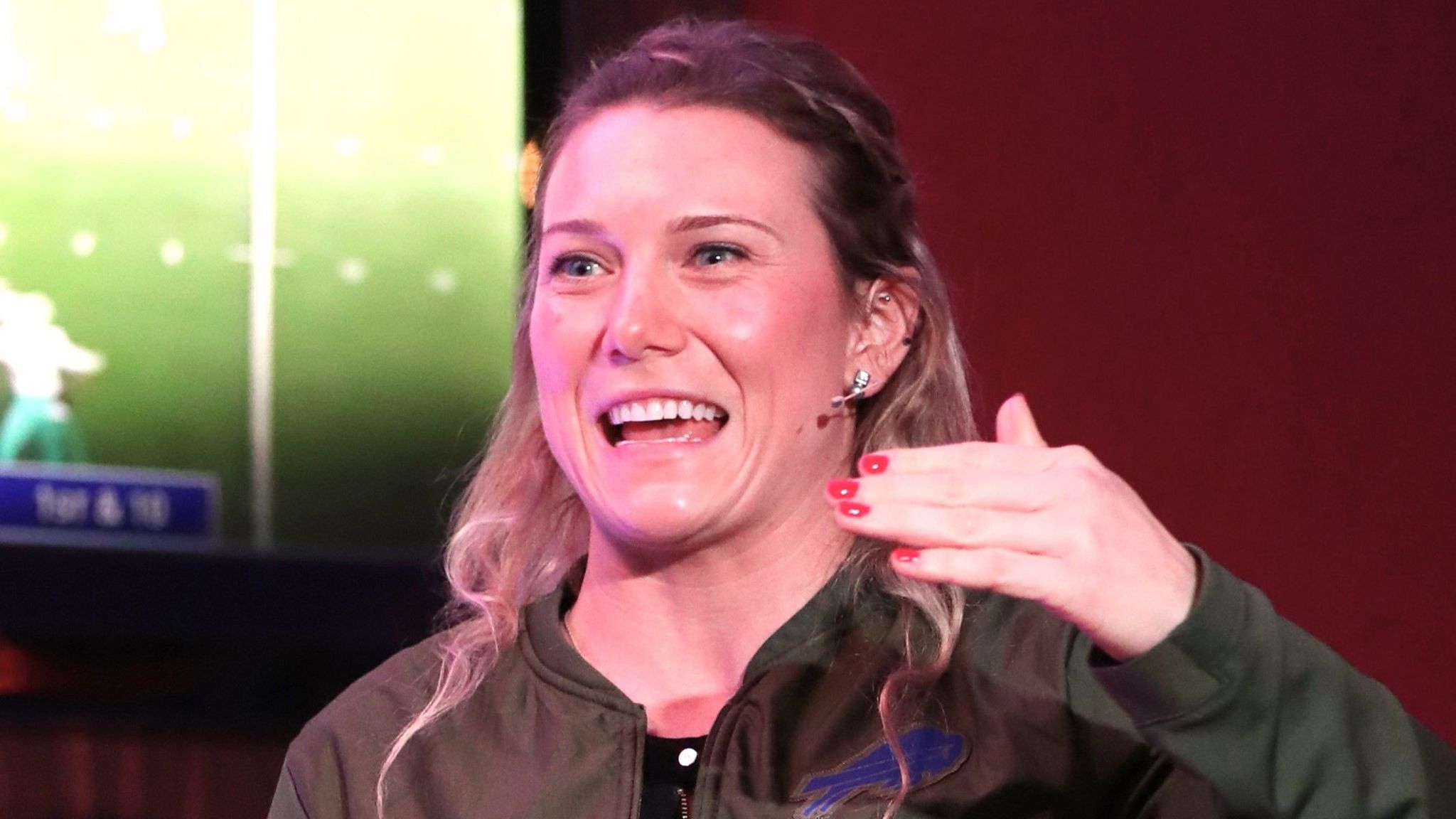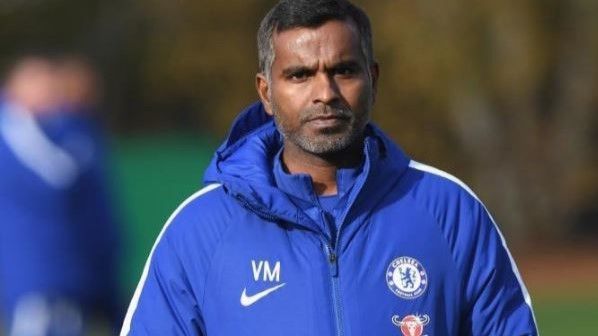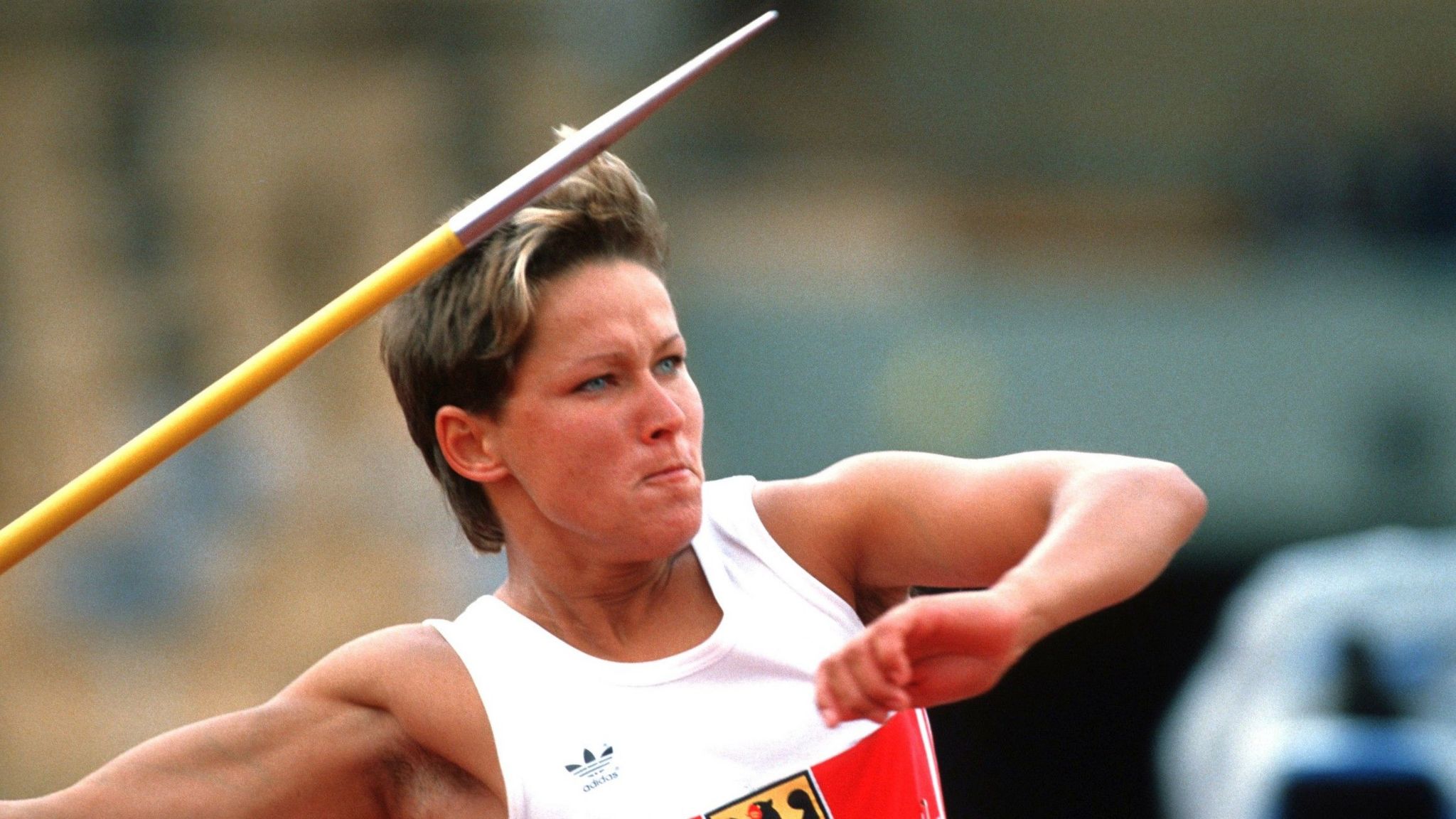Sitting on a bike and pedalling is something Simon van Velthooven has done for countless kilometres and hours during his cycling career. He has done it well, winning Olympic, World and Commonwealth medals on the track.
He still pedals a bike for a living, but the New Zealander’s life as a ‘cyclor’ on a sailing boat in the America’s Cup is now very different.
“You’re just getting shaken around, holding on while you’re turning some cranks that are veering a lot,” Van Velthooven tells BBC Sport.
“It’s RPM [revolutions per minute], power, watts, cadence, shaking, high turbulence, getting punch-drunk by whacking your head on the walls and trying to look at your numbers on your screen, and listening to all the comms of the sailors and what they’re doing and trying to anticipate your energy levels coming up to the next manoeuvre.”
Van Velthooven is among the wave of cycling experts that have crossed over to the world of sailing before the 37th edition of the America’s Cup – the oldest international sailing competition in the world – this autumn in Barcelona.
Traditionally everything above the waterline on the 75ft-long boats – the sails, mast and winches – was powered by grinders, sailors who used their arms to turn cranks.
Yet technological rule changes for this year’s competition have reduced crew sizes from 11 people to eight, but with the proviso that any body part can now be used to create power.
As legs can typically produce more power than arms, cyclors have been brought in and static pedalling systems installed on the boats. Teams estimate they have since seen a 25-30% gain in watts produced per athlete by using the lower part of their body rather than upper.
Cyclors are not entirely new. They were also used during in the 2017 staging of the America’s Cup in Bermuda by Emirates Team New Zealand, which is how 35-year-old Van Velthooven was initially recruited to sailing from cycling.
The Kiwis were outliers during that competition as the only crew to try the technology, although it was to great effect as they won the Cup. They retained the title in 2021 when rules required a return to grinders.
This time around the cyclor technology is being used by all six competing teams.
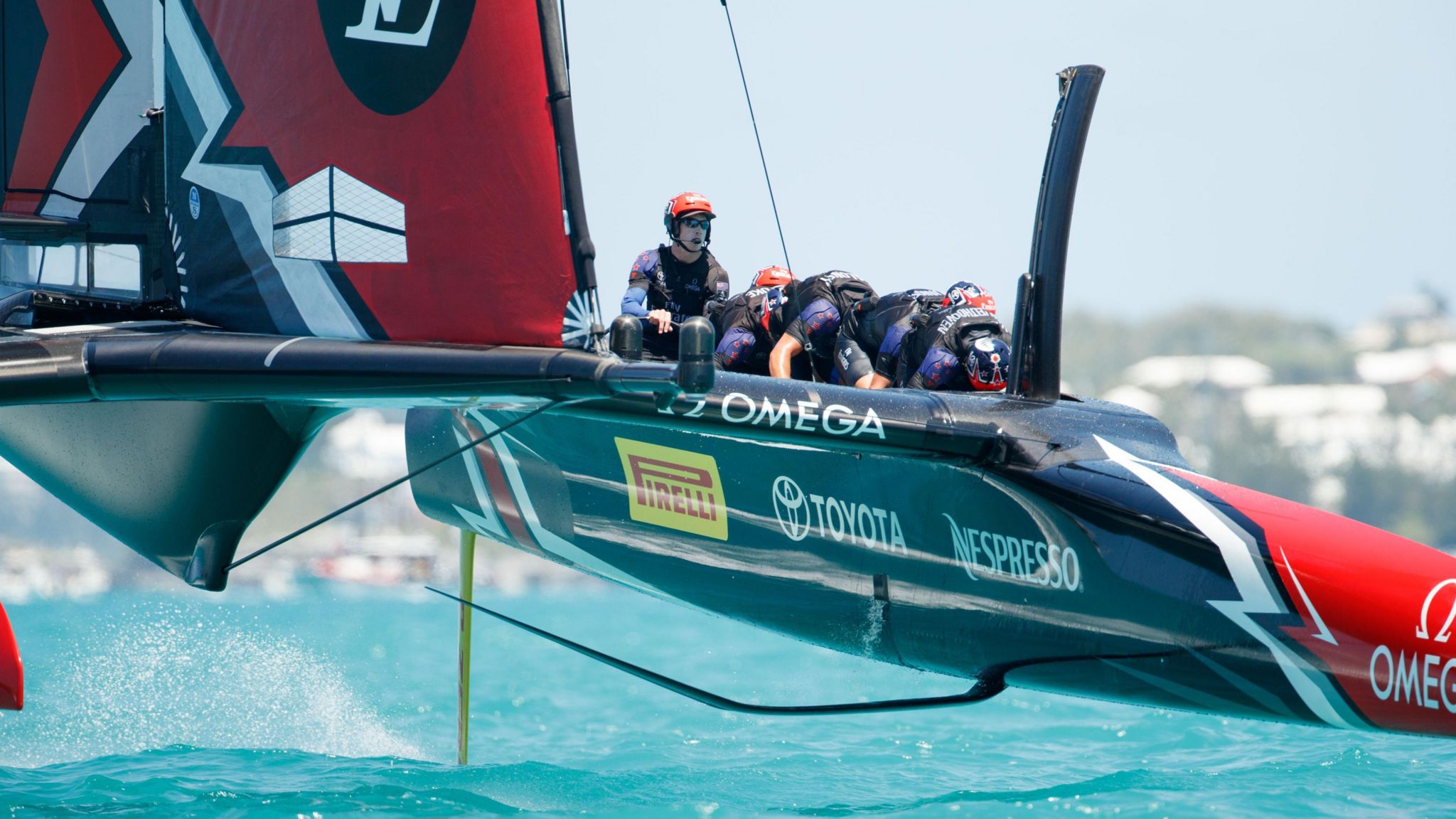
This year’s America’s Cup boats – known as AC75s – are “designed to fly” across the water on a foiling monohull, racing at speeds of up to 50 knots (58mph).
For athletes with no experience of sailing, seasickness is an obvious first hurdle they need to overcome before they can become a cyclor.
Two athletes were unwell during trials with New York Yacht Club American Magic and were dropped.
“They’ve got to be able to perform in somewhat high-G [force] situations when the boat’s getting spun around,” says Terry Hutchinson, president of sailing operations at American Magic.
“Then they’ve got to be able to perform day in, day out in the sun and heat of Barcelona. It takes quite a unique athlete to achieve that.”
Cyclors are not built the same as the professional cyclists at the Tour de France or Olympics. For cyclists, body weight and watts per kilogram are key to how they perform.
However, cyclors do not need to pull themselves up a mountain or around a track. They simply need to produce as big a wattage as possible when the boat needs it.
“There are some unique things we are looking for in this particular sport,” says Ben Day, head performance coach of the American Magic team.
“When we’re talking about Tour de France cyclists, we’re maybe looking at someone who is 60kg up to 75-80kg. All of our guys are running 90kg and above.
“It’s a bit of a unique skillset. We have guys who are super strong and we’re just looking for absolute power.”
Former cyclist Ashton Lambie, like Van Veltooven, has swapped over to sailing purely for his credentials on a bike.
Lambie is a former individual pursuit world champion. In 2021, he became the first rider in history to break the four-minute barrier for a 4km-long effort round the track.
He joined the American Magic team after a trial and his body shape has changed considerably over the last two years since.
“Even by cycling standards I was a fairly big guy, I am moderately well known for having big legs and they’ve gotten bigger since I’ve come here,” Lambie says.
“During my racing career I was probably between 70 and 74kg, and now I’ve gained over 10kg. Most of it is muscle, and I’ve also gained watts. It’s been a really big change.”
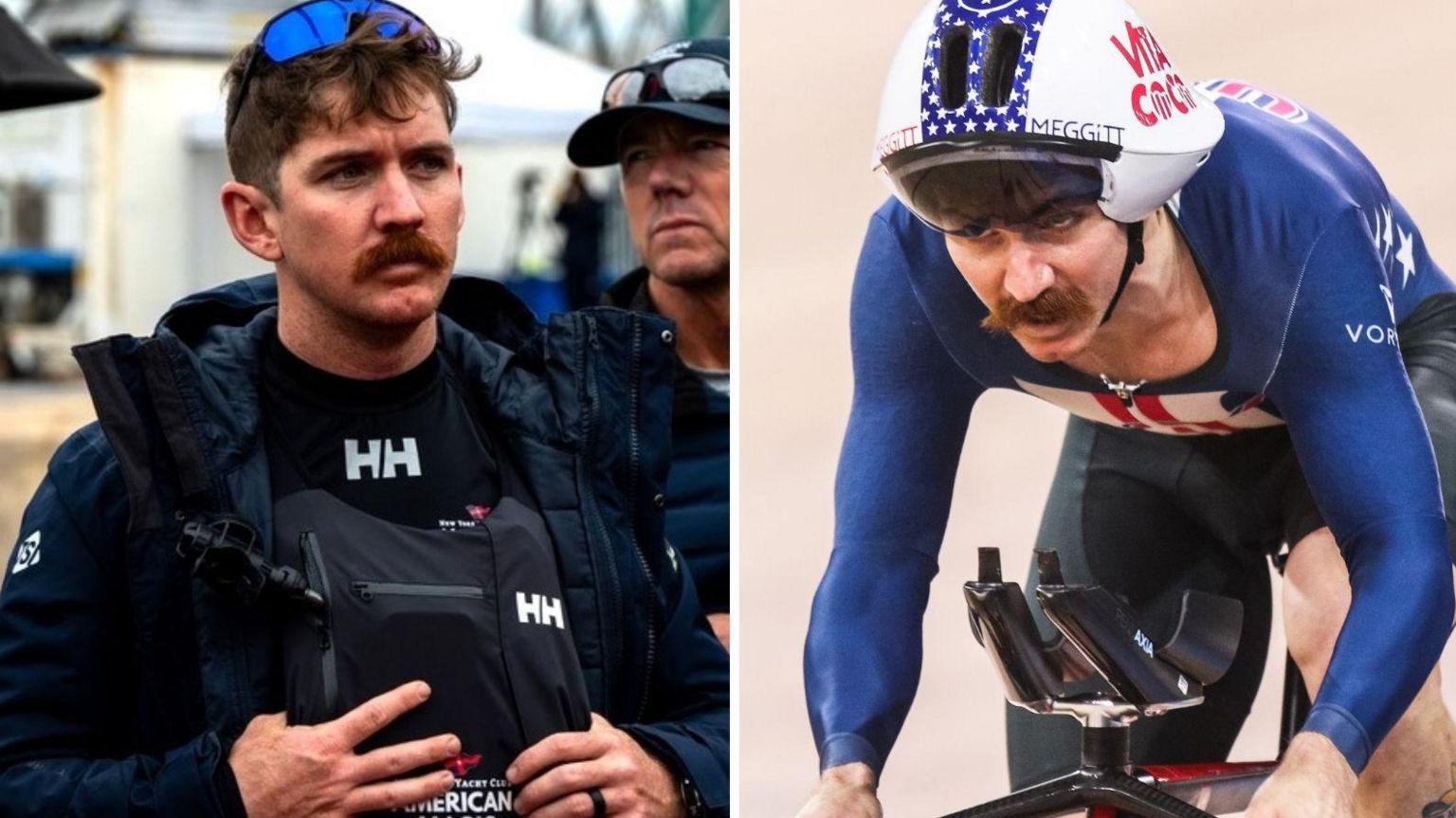
Lambie, 33, says the only similarity to cycling is that the cyclors are pedalling in the same motion as on a regular bike.
“The pedalling feels very different and the overall sensations of moving on the water, either laterally or vertically, is wildly different from any kind of cycling,” Lambie says.
“When you go through a corner on the track the banking pulls you in and the G-force pushes down on you – that’s a very natural feeling when you lean into the corner.
“But on a boat it’s like you’re upright and somebody just whips the boat around so you’re getting slammed, it’s a purely lateral load.
“It looks quite static and stable when you’re watching it on TV but the boat really moves a lot.
“We do a lot of stability work and mobility work in the gym and that definitely translates over to the boat when you’re getting jostled around a lot and you still need to be able to pedal.
“The times when the boat’s a little unstable, you’re getting thrown around the most, that’s when it’s most important to pedal. Being able to put out power even when you’re not in an optimal pedalling position is huge.”
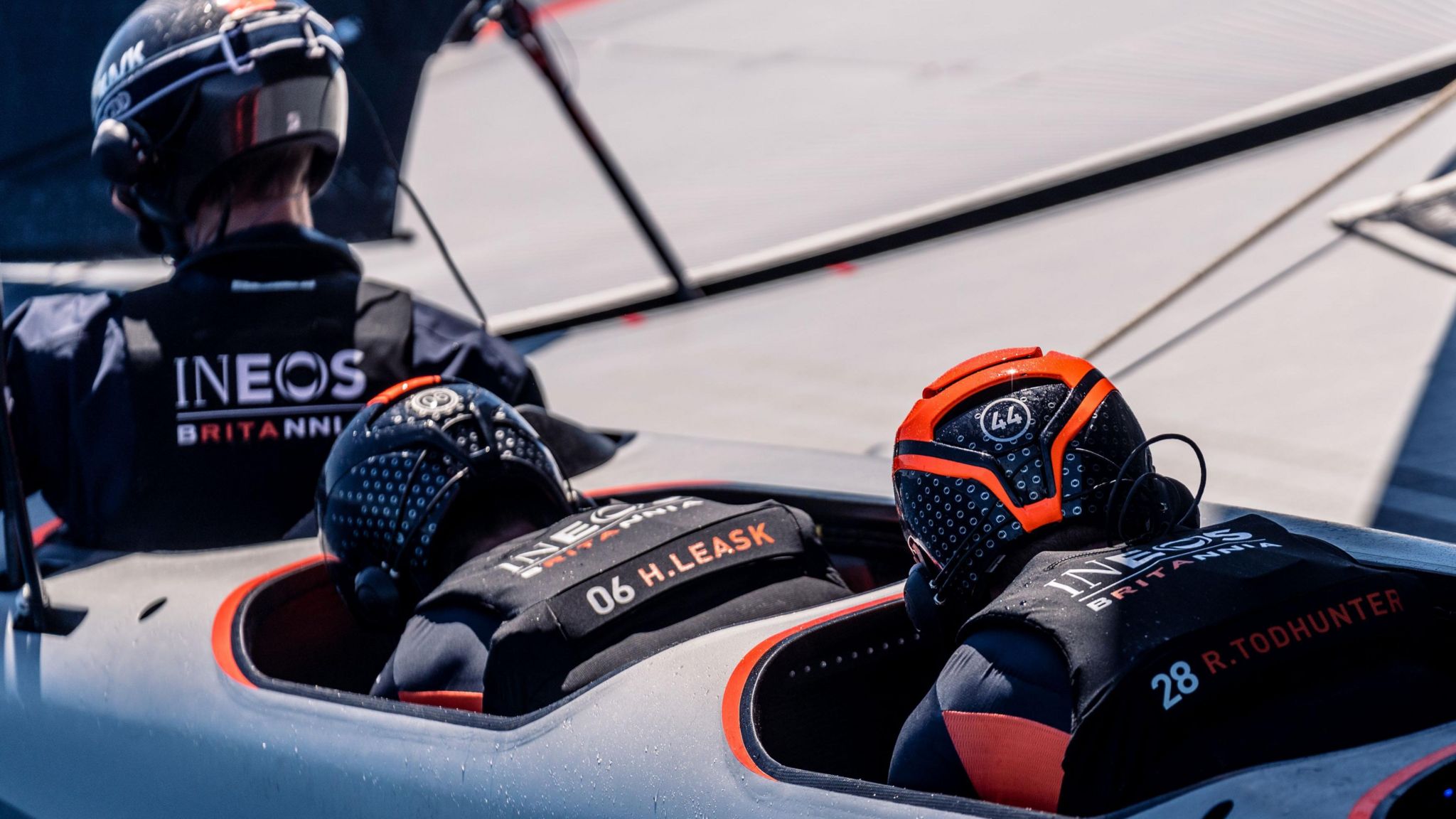
The races take place across head-to-head events that are split into two parts.
The first part – the Louis Vuitton Cup – determines which of five challengers will face this year’s defending champion Emirates Team New Zealand in the second, the America’s Cup itself.
Races take approximately 25 minutes and this year start in August and end in October.
Endurance is the key metric for cyclors, who need to be able to consistently produce a high wattage during the races themselves and maintain their form across 10 weeks.
“We just want a huge reliable engine for the three months that we’re going to be racing,” Van Velthooven says.
“Big days are big days and easy days are still big days because they still need heaps of power. It’s relentless.”
The UK’s Ineos Britannia team, led by Sir Ben Ainslie, might not have recruited professional cyclists to their crew like some of their rivals but they have the next best thing – an affiliation with the Ineos Grenadiers cycling team, formerly Team Sky and winner of seven Tours de France.
Matt Gotrel is part of Ineos Britannia’s crew. This year will be his second America’s Cup, but his first as a cyclor rather than grinder. A former Olympic gold medal-winning rower, having been part of Great Britain’s eight at Rio 2016, Gotrel has found it a “big challenge” to train a different muscle group, even if recreationally he considered himself a cyclist already.
“As rowers, we had an upside-down pyramid [body shape] before, but it’s flipped around now,” Gotrel says.
As grinders, his crew would aim to produce 400 watts of power over 20 minutes. As cyclors they are now “well north of that”.
Training for the past two years has predominantly taken place on the road or in the gym, rather than on water. Volume blocks can consist of four to six-hour-long rides, three times a week, interspersed with high-intensity intervals on a static bike and weight training.
Gotrel, from Cheltenham, Gloucestershire, compares powering the boats in a race to a cycling time trial, but with repeated sprint efforts throughout.
“You want to have a really good aerobic base where you can sit at as high a power as possible without producing too much lactate, and then you have your big spikes and need to be able to recover from those,” he says.
The connection to Ineos’ cycling team has been a “massive” resource for Gotrel and his fellow cyclors, enabling them to share training and nutritional insight on a training camp in Spain together.
“I had a chat with [sprinter Elia] Viviani about some sprinting technique, and then there are Filippo Ganna and Dan Bigham who have been really good on some of the strategy and fuelling things and what they did to push on the hour record,” says Gotrel
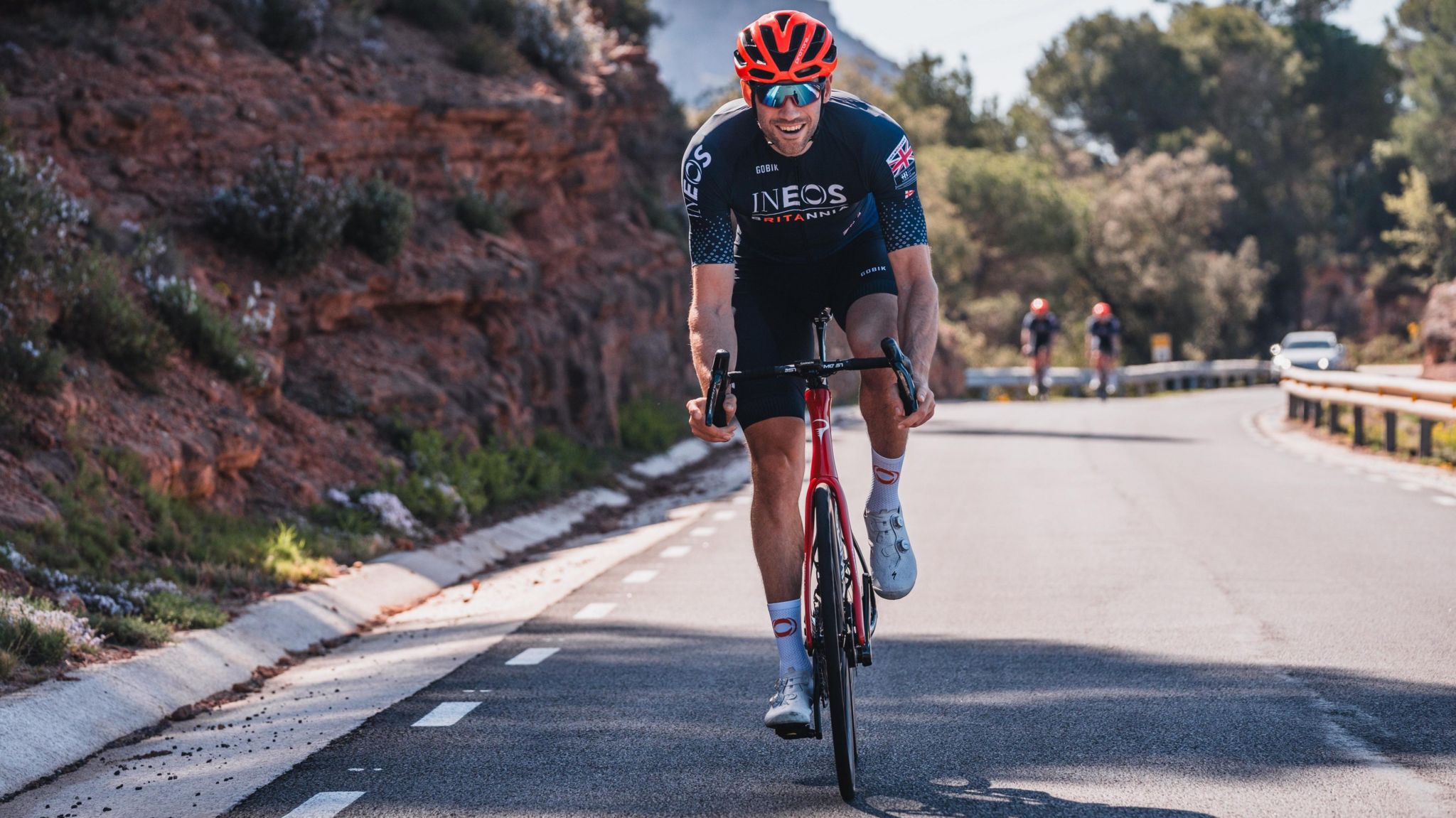
Hutchinson says the America’s Cup is a “design competition as much as a sailing competition” and development of the boats has been a process lasting more than two and a half years.
Part of the challenge has been incorporating the concept of a bike into a boat.
Most teams have chosen to position the cyclors upright, as they would be on a regular bike – even if the ‘bike’ consists of just a seat, seatpost and crank.
“We started it by scanning a standard bike and putting that in a boat and seeing what position you’d need to put the cyclors in,” says David Adcock, Ineos Britannia’s lead mechanic.
“Some of the ideas we came up with at the start looked really strange from a cycling perspective – head down pretty much touching your feet – but we kind of went away from that and have gone back to a standard bike position that was best for getting power out.”
In order to maximise the aerodynamics, the cyclors are below deck. They don’t have much to look at beyond a screen showing their data.
“Trying to get someone who’s 6ft 3in to fit has been quite challenging,” says Adcock. “We’ve got handlebars that we can move up and down to get them packaged in properly.”
By contrast, the American Magic team have chosen to put the cyclors in the recumbent position, lying almost flat on their backs.
“It’s the America’s Cup and so it takes clever thinking to be successful. I would look to Team New Zealand’s success in 2017 – they were the outlier then and they won the regatta,” Hutchinson says.
“We’re not afraid to be different, we understand the power requirements of the boat.”

Adcock describes the AC75 as like an “F1 car on water” and the links between the America’s Cup and Formula 1 are easy to find.
Ineos Britannia share their UK base with the Mercedes team – where Ineos is also a sponsor. Adcock previously spent 22 years working for Mercedes before moving across in 2022.
American Magic have also spent time with the Williams team to see how they work.
Each boat can produce more than 3,000 data points within half a second and send them to engineers onshore for analysis in real time.
“The steering wheels look more like an F1 wheel with the functions on the wheel and how the boat’s programmed to automatically shift mode. That side of it is very similar,” says Hutchinson.
“If you’re good at Call of Duty you’re probably really good at sailing an AC75 because it’s a similar controller.”
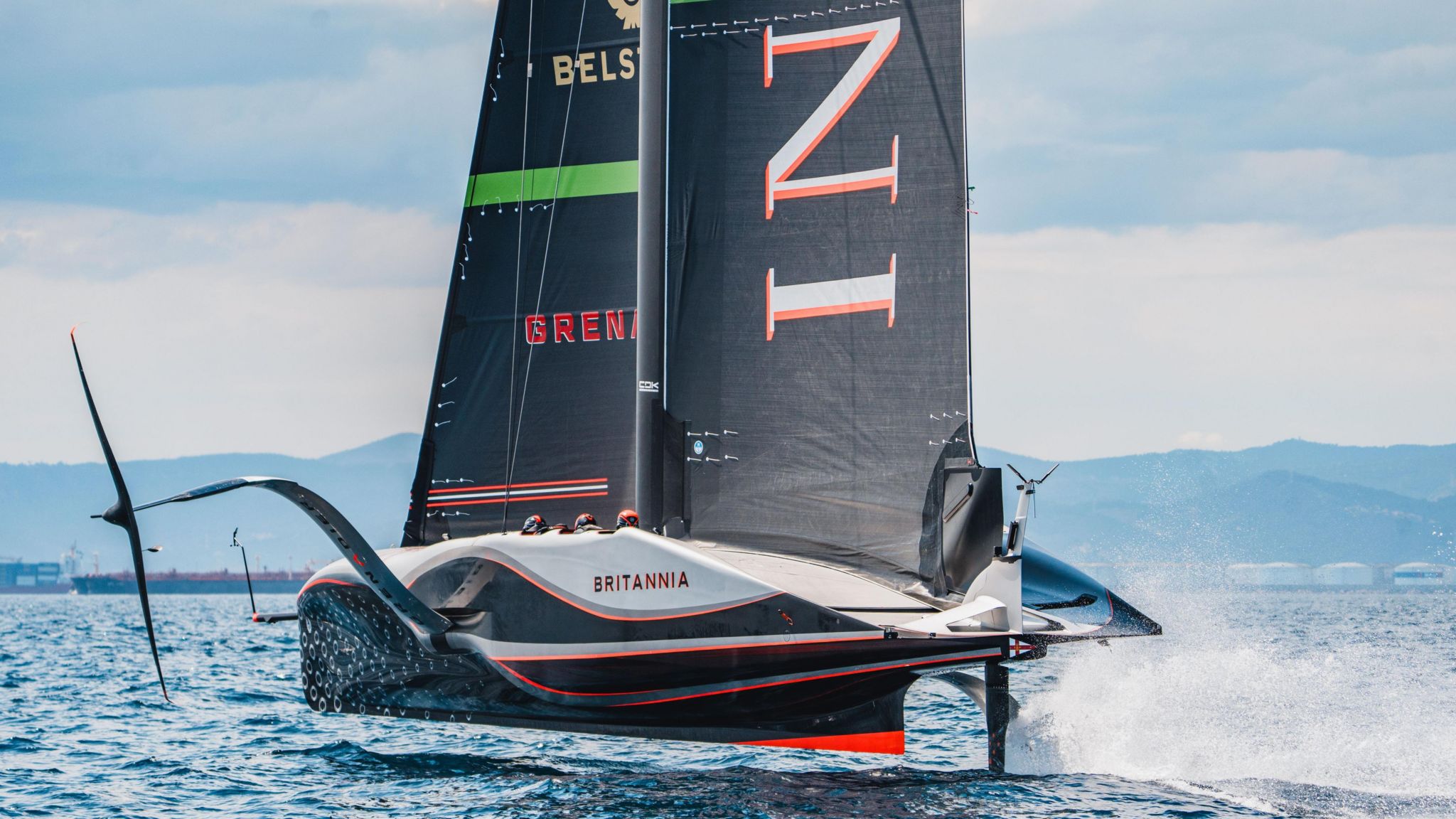
The technological advancements in the sport have taken the America’s Cup far away from the experience of most traditional sailors. The return of cyclors for this year’s race has moved that dial even further.
“It’s hard for the average sailor to relate to what we’re doing,” admits Hutchinson, who has been part of five America’s Cups.
“They look at the boat and there are a lot of traditionalists out there who say ‘this actually isn’t racing’.
“But I bet you and I couldn’t hop into an F1 car and understand how to turn the thing on. We understand the concept of the car, we know we can drive a car, but we probably can’t drive one of those cars. I equate it to that.
“The America’s Cup is a unique competition, it’s always been at the tip of the sphere of the sport.”
The crossover of cycling into sailing might seem incongruous, but at the heart of the two sports is a very similar culture, Day believes.
That shared ground has made blending the two so successful.
“There seems to be a correlation between sailors who love toys and boats and cyclists who love bikes and toys,” says Day. “We all have this sense of freedom of getting out into nature with the wind in our hair.
“Whether it’s on a boat or on a bike, it seems to be something we can enjoy together.”
